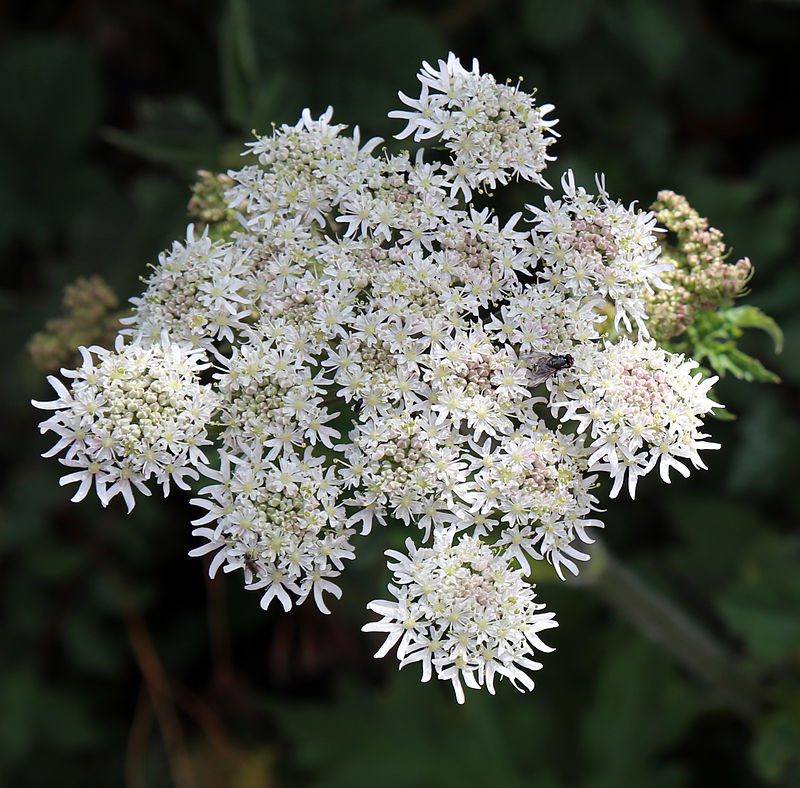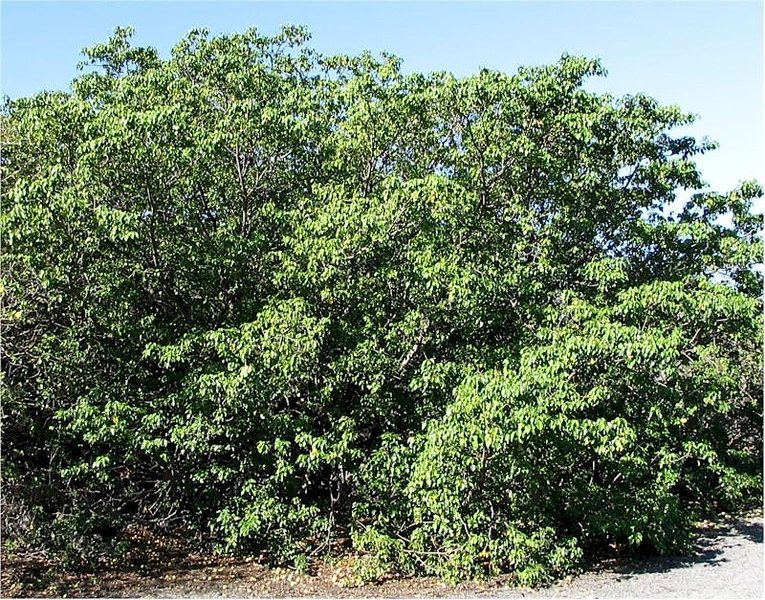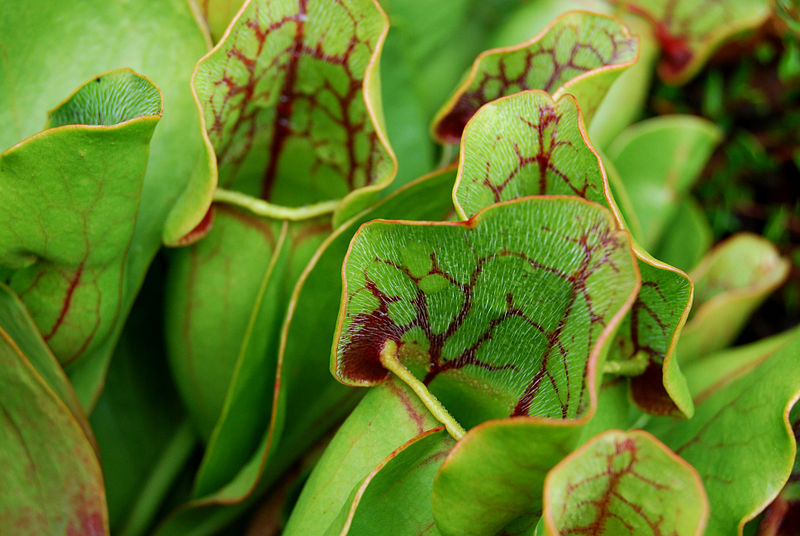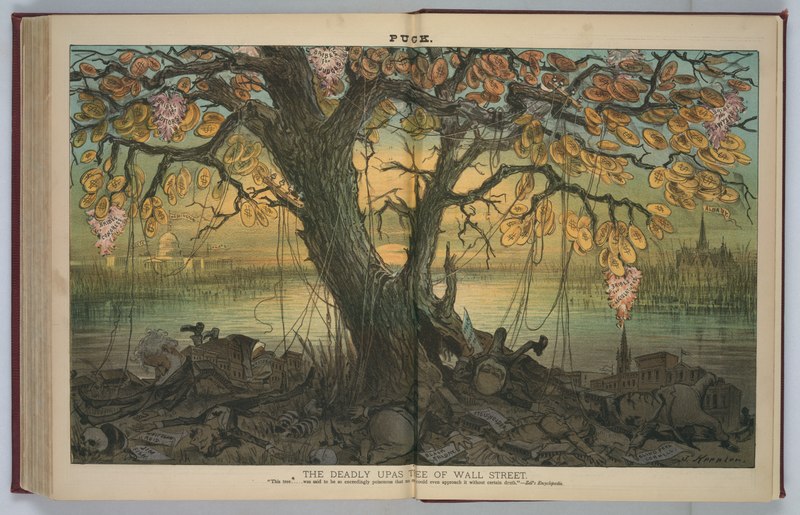https://www.twitch.tv/rpglory/video/302304580
We start a new game where we venture into an old system.
Sunday, August 26, 2018
Sunday, August 19, 2018
Killer Plants - Maximum Frondage - Part 3 of 3 - Aspects of Killer Plants
Aspects of Killer Plants:
The main reason I have been compiling plants is to find what overall aspects are defined.
Alien and the Unknown: One of the things I noticed as looking over the various killer plants is they represent the alien and the unknown. The lion's share of killer plants from myth seems to come from explorers diving off the map and running into something unexpected. This makes them fairly alien as they usually don't have a magical aspect in this regard, but something definable. Hence why I consider them alien, but familiar.
Focal point of the Ecosystem: While there are exceptions, plants are pretty much responsible for life. Their ability to generate oxygen is the main reason we live. This can be subverted in your killer plant as they will have an effect on the area merely for existing.
Guardians: Often Killer plants are guardians of some sort. Whether it's something as protecting a castle, tomb or chest, or more esoteric as "mother nature's revenge." Somebody did something wrong, even if it was invading their territory, and this is a reaction from a higher power that can not be defined. Other times its essentially done by a crazy gardener who wants you off their lawn. Knowing who did it really can help define why the killer plant was grown.
Instinctual: Killer plants are usually not smart. If they aren't merely a straight instinctual action, they are usually about as smart as a dumb animal with the truly intelligent ones being the exceptions.
Relationship Gone Wrong: Killer Plants represent a change in a relationship. Normally plants are passive, is the provider of oxygen, food and building materials. Killer Plants upset this relationship by being active and a threat. Instead of being devoured, they become the devourer. This is also increased by when a plant takes over an animal or insect and turns it into a minion, slave or zombie.
Slow: Even when animated, plants don't generally move at the same speed as animals. Often they are rooted in place and when they move, it's time-consuming.
Sturdy: Many plants are very sturdy and are composed of the material that is ether tougher than their animal counterpart or more tensile. Nutshells, tightly knit vines or roots, or good old fashion wood
How Plants Attack
I'm using this as a means to list ideas of how killer plants attack in order to make yours more interesting.
Branches/Vines: These are easily the most common attacks in fiction. Branches are often just a simple battering attack, but vines constrict and often have a strangling aspect. Vines have been used as a "jaws of life" to rip apart a vehicle, not unlike a can opener.
Combustible: Plants are usually susceptible to fire. However, some plants use fire as a means to reproduce. It's not that hard of a stretch to get a plant that has an immediate reaction if burned.
Digestive Enzymes: Plants don't have stomachs as a rule, so they instead break prey down with digestive enzymes, not unlike an insect. This can easily justify some sort of acid attack.
Nuts/Pine cones: In nature, nuts and pine cones can be fired to grow another tree. In fiction, it has the velocity of a weapon. It can be stimulated by action, movement or even fire.
Pheromones: Plants can attract/repel creatures with pheromones released from it. This often creates symbiotic relationships with other creatures like bees and flowers, but it can be subverted as a means to attract prey with killer plants.
Pollen: Many plants use this to generate future generations and anybody who's had a hay fever day. It is a great way to give a killer plant an attack that causes sneezing and choking, and may even be poisonous.
Solar Energy: Plants live from photosynthesis and it's not that hard a stretch for the killer plant to focus this energy into a laser-like weapon.
Toxins: This is one of the most common defense mechanisms in the real world. Many plants are toxic to varying degrees in order to ensure they won't be eaten. It's not that far of a stretch to make it venomous by giving it a delivery system. It can often be farmed by local populations for hunting or war
Spikes: From Cacti to Ironwood, many plants are naturally spiked and it's not that far a stretch to have them swing it at a target. It can be used to simulate jaws if designed in a specific way.
Other Ideas:
How plants are intelligent?
I would probably handwave it, but it’s not that hard a stretch to assume that their internal cord is lined with the plant equivalent of neurons.
Another idea is to make them sentient, but only when their flowers bloom, thus creating a seasonal sentience.
Perhaps one plant isn’t smart, but a group of trees has interlocking roots creating a communication field that spawns intelligence.
(NERDS!)
Plant Mobility
Most plants do not move at a speed that is interesting, but it’s fun to extrapolate how they would move. The most common is to assume their roots are able to be uprooted and it simply walks or runs. They might even pull themselves into the roots and travel into the ground.
If it does move far, it may need to return to being planted to “rest” as it hasn’t eaten all day (carnivorous plants aside).
Mobility is more common amongst their seeds. Sometimes they use the wind dispersal system (ranging from gliding, spinning, helicopters that spin) that allow their seeds to fly further, and it’s not much of a stretch to treat them as full-fledged flight. Some are propelled by fire so could be extrapolated by monster design to have a plant monster with essentially chemically propelled rockets. Perhaps they are almost parasite like and burr onto a target and then take them over.
Water plants may end up having tentacle-like roots and/or an organic sail to use the weather to travel.
Plants as Traps
If you are using a killer plant, but it's not a key aspect, treat it as a trap, rather then a monster.
Use survival instead of thief tools and suddenly your ranger feels way more useful.
Dark Revelations – the Role Playing Game.
When we wanted to use plants, we wanted them to be different. One of our greatest monsters is that of the Damnation Eater. It is a large mobile vine that is the garden between earth and adjacent realms. Fiends fear this monster as it will consume its essence not allowing it to return to its respective realm upon death.However, what is noteworthy when compared to standard myth is we decided that plants would have a psychic component. In the northern parts of Canada, there is a race known as the Harvesters that can best be described as evil mastermind farmers (even if they look somewhat like humanoid zucchinis). Highly intelligent and masters at manipulating genetic material, they grow the majority of plants monsters for their own purposes. These are known as Treannials.
We also wanted to originally test out the 3rd edition rules and allowed plant pcs. Besides Harvesters being allowed as player characters), we also have a race known as stumpies. Imagine sentient, stubborn tree folk that look like a sentient tree stump.
Plants Links of Note:
I'm mainly including these here so I can reference them later for my own purposes. Expect this list to grow over time.
Incredible dandelions could hold the key to growing plants on the oilsands
Indigenous stories lead scientist to discover plants can hear
Pitcher Plants Turn Their Trap On and Off Plants glue on sand for armour
Spinach plants have the power to detect landmines
Trees have their own fungal internet
50 Interesting Plant Facts
23 Things You Probably Didn't Know About The Plant Kingdom
The secret world of plants Top 10 Weird Plants Facts
10 most strangest plants in the world
10 of the World's Deadliest Plants — And How They Kill You
There’s A Tree Covered In Spikes Whose Fruit Explodes Sending Sharp Seeds 100 Feet At 150 Mph!
Bibliography
The Beasts That Hide from Man: Seeking the World's Last Undiscovered Animals
By Karl Shuker
https://dnd-wiki.org/wiki/Canon:Plant http://cryptidz.wikia.com/wiki/Category:Plantae https://mysteriousuniverse.org/2014/05/carnivorous-cryptid-plants-of-the-world/ https://en.m.wikipedia.org/wiki/List_of_fictional_plants https://tvtropes.org/pmwiki/pmwiki.php/Main/ManEatingPlant and of course
https://www.youtube.com/watch?v=7SeQrn2a3cA&ab_channel=TheGeniusLemon
https://www.monstertalk.org/236-carnivorous-plants/
https://www.monstertalk.org/236-carnivorous-plants/
really amazing podcast that gave me a few new insights.
Infinite Monkey Cage - The Wood Wide Web
https://www.californiacarnivores.com/products/the-revised-savage-garden-autographed
Pics sited
All pics save the exceptions below are from wikimedia commons where the distribution and commons licensing are listed.
https://commons.wikimedia.org/wiki/Main_Page
https://forum.rpg.net/showthread.php?831617-Myths-of-Killer-plants the good people at rpg.net whom make a great sounding board :)
Pics sited
All pics save the exceptions below are from wikimedia commons where the distribution and commons licensing are listed.
https://commons.wikimedia.org/wiki/Main_Page
https://forum.rpg.net/showthread.php?831617-Myths-of-Killer-plants the good people at rpg.net whom make a great sounding board :)
Tuesday, August 14, 2018
Killer Plants - Maximum Frondage - Part 2 of 3 - It Came From Gaming
Killer Plants in Gaming:
Dungeons and Dragons:
Gaming started with Dungeons and dragons so we will start there. The following are the most common or archetypical plant monsters:Amber Lotus: Hailing from Mystara and the original creature catalogue, Instead of a damaging attack, it generates a sleep pollen.
(not quite amber, but close enough)
Archer Bush: This is a monster of the mid-80's. and both part of the legendary modules B1-9 as well as the creature catalogue. It's noteworthy for being a killer plant with a ranged attack. It hides its huge thorny maw under a pile of debris.
Blights: While these plants are found as early as 3.5 and 4th, they have become the default of evil plants in 5e. This is where the needlefolk, and strangling vine stereotype ended up.
Forester's Bane (snapper saw): Dating back to the original Monster Manual II, this plant is more of a trap than a monster. It traps a target and then begins to saw the creature to death.
Grabgrass: My first experience with this monster with this monster is not in DVD but in the old video game Ultima III. A while back a popular podcaster did a contest to showcase this monster. I think it was mainly included as a joke. Grass is a common plant in urban environments and to fear the grass is silly, especially if it kills your character.
Obliviax Moss: This adnd 2nd edition monster is a patch of moss steals memories and then uses the victim as a self-defence mechanism.
OrcWort: This is one of my favorite plant monsters from 3rd edition. Appearing as a giant woody, pitcher plant whose fruit evolves into small orc-like creatures. They are controlled by the original plant.
Shrambling Mounds: If treants are the copy of the ents, the shrambling mound is a monster based on swamp thing. first introduced in strategic review #3 in 1975, it became the other killer plant staple in pretty much every edition. It is noteworthy that it feeds off electricity to regenerate and heal.
Treant: These were originally introduced in 1974 in the three volume set in 1974 as Ents. They were renamed as treants in Expert Set (light blue box) in 1981 as Treants and have been a regular monster ever since. These communal trees are magical and powerfully built, and not immediately hostile.
Stranglevine: Introduced in Blackmoore in 1975, it isn't so much iconic as it is an archetype: namely killer vines. The role of vines that strangle like a constrictor seems to be one of the defaults for killer plants. This is shown in the following similar plants: such as the 5e assassin vine. A similar theme is done with the hangman's tree in the original monster manual II.
Tri-flower Fronds: The original monster manual 2 was filled with many plant monsters and here's another. It's trumpet-shaped flowers knocks out a target and then uses another one of its bells to digest the victim, not unlike a spider.
Twilight Bloom: Another Monster Manual 2 alumni, It is stated out, but more of a trap than a monster. It attracts its targets with its sweet sap and drips a sappy poison when it comes close.
Vipervine: If stranglevine is the constructor of the plant world, vipervine is the poisonous attacking plant. Dating back to polyhedron #19, 1984, it has a fairly long run in Dungeons and Dragons.
Whipweed: This near plant originally from the fiend folio anchors itself and strikes those within range like a pair of tentacles.
Witherweed: This is a dungeon plant that is very toxic. It's touch causes shaking and reduction until the plant slowly but surely absorbs its target. It only gets worse if it is burned releasing a pungent fume that is toxic. This dates back to White Dwarf #7 in 1978, but became a staple in the fiend folio in 1981
Wolves-in-sheep-clothing: This is one of my favourite iconic plants monsters from dnd. Originally showing in Expedition of the barrier peaks in 1980, it became a feature in the original monster manual 2 in 1983. I don't think it appeared ever since, but I always loved the visual of a killer stump with a cute bunny on it's top. It really doesn't do anything particularly different, but that sideways stump filled with sharpened teeth is one of my favourite visuals in the medium.
Vamprire Roses: Another Dungeons and Dragons monster, that dates back to the colored box adventures, it is a pretty prototypical example of the vampire plant: aka a plant that appears harmless, but feeds on sentient blood. It is known for giving an entrancement using its pheromones. The plant Bloodthorne in later editions fills a similar niche.
Vegepygmy: While it's really on the fence whether it's a fungoid or plant, it is the closest example I have of a humanoid plant that is still fairly intelligent and is communal. When it first appeared in expedition to the barrier peaks, it amused me terribly despite the potentially racist name. The fact they have dog plants that follow them is icing on the cake.
Wood Woad: The merging of a soul with a tree creates a wooden, immortal guardian that sneaks and can even jump from tree to tree.
Yellow Musk Creeper: Originally found in Dwellers of the Forbidden City (1981), but achieved notoriety in the original first edition Fiend Folio (1981), it is particularly noteworthy by using its victims as a germination pod. They are zombies that are under the control of the original plant.
Gamma World Plant Monsters:
While Dungeons and dragons might be the first and most extensive, killer plants have a stronger connection in Gamma world. I think it's because, in most editions, you are allowed to play a mutant plant as a player character. Here are some of the highlights.
Ber laps: I can best describe this as a killer Lilly pad. It is large and uses acid to both attacks and dissolve its prey.
Crep plant: This psychic plant likes to hide in the background (either underwater or in a mass of other plants) and leeches off nearby creatures with its death field.
Forestal: These are the "killer trees" of the setting which shoot seeds and sprays pollen. It came from the 7th edition version and pretty sure it was made to be a more aggressive version of the Crep plant.
Horl Choos: Imagine a tribble with spines. It has the nefarious ability to shoot its spines which are tethered to it, not unlike a fisherman. It then injects acid to soften the target.
Kai Lins: Imagine a plant that looks like a crocodile or heavy lizard that is a carrion feeder. The generate a low-level electrical charge from their tail like root. They are also surprisingly susceptible to domestication.
Kep: If you ever see sandy soil with little around it, beware. It can best be described as a living bear trap as it will snap its roots to entangle and constrict its opponents.
Mantrap: This is an evil venus fly trap that wants to desecrate that land and feast on it remains. Its pollen causes madness and has an acid spray.
Narl EPs (Ghost tree): This Bunyan-like tree when disturbed flings seeds that burst with a sonic blast.
Perth: This plant, at several times of the year, glows when disturbed with intense radiation.
Pineto (Horse Cacti): A mutated thorn-bush is essentially the plant equivalent of a wild stallion, where it is technically possible to ride, but difficult to do so.
Seron Lous: This aquatic plant is unusual as it's a tool wielder and often swings a club or rock at a target. Once it's target has been immobilized, it drags it under the water to feed.
Win Seens: Also known as tanglers, they cover about a 30-foot radius. It is known for living in a symbiotic relationship with predators which it attacks with pheromones.
Zeeth: This purple grass that attempts to teleport into the bodies of potential hosts where they will grow like a weed until it kills the host, in which case it will sprout from the corpse.
Tuesday, August 7, 2018
Killer Plants - Maximum Frondage - Part 1 of 3 - Myth, Media and Real Life.
This article is a long time coming. Finally another Monster feature.
Base Definition:
Killer Plants: a plant that takes aggressive action towards other creatures. This has three sub-categories as follows:
1. Carnivorous Plants: These are plants that eat something for nutrients.
2. Grumpy Plants: Plants that attack directly, but technically don't need to.
3. Sneaky Plants: Plants that don't attack directly, but use some indirect means to put any interlopers in mortal peril.
Writers Note: Fungoid often folded into plants for purposes of critters, in spite of being similar to plants. I specifically stayed out of the fungoid breakdown in the hopes of generating future material.
Killer Plants of Myth:
Plants are usually a symbol of life from death. There are comparatively few in myth:
The Brazilian Devil Tree: Found in the Mato Grosso region, and also known as the octopod tree, its branches hide in the undergrowth of the rainforest floor. When a victim enters range, it wraps these branches around a target and strangles it to death.
Cactus Cat: Imagine a bobcat like cactus and with the scream of a mountain lion. It drinks from other cactuses. While hardly the most killer plants, I can imagine how it would be running into one would be painful.
Fairy Tree: Of Irish myth, this was originally discovered in a Supplementation where it was depicted as a malevolent tree that shoots thorns on those that provoke its ire. These thorns end up injecting curses that create psychological issues.
I tried to go back to the original source, but the best I could find is the idea of the fairy tree. These hawthorn trees are considered bad luck to disturb as they are the home of the fey. A particular species, known as blackthorn, was the wood that they made shillelaghs.
Fear Gotoch: This patch of dead grass is also of Irish myth and is known by another name: hungry grass. Those that tread on this suffers from perpetual hunger.
Furutsubaki-no-Rei: Known as 'spirit of an old tsubaki tree.' when this tree gets old enough, it gets the power to take it's spirit and project it as that of a beautiful woman.
It ranges from poisoning people with insects to weeping to warn them of danger.
Lotus plants: In the original Greek myth, it was a plant that induced euphoria and complacency. They forgot everything but it's embrace.
Madagascar Tree: At the end of the 19th century, a German explorer encountered a carnivorous tree. It was said by the locals to be used for a sacrifice that quickly sacrificed her by branch strangulation.
Mandrake: The Mythic version of this plant has roots like look like a human. There are tales of mandrake having two genders and is created from the dripping fat and blood of a hanged man. If pulled from the earth, it will let out a scream of death.
Naree Pon: This Buddist Thai myth is that of a creature that is part humanoid and part plant. They have a tendency to throw rocks at trespassers.
Nubia Tree: This Mythical Northern Africa tree was reported by Phil Robinson in 1881. He was told that it used it's golden fruit to lure its victims into the rich green sharpened grass that grew beside it as an extension of the plant itself.
Romani Vampire Pumpkin: What if a melon or pumpkin had been possessed by evil spirits. They animate at night to sate their unholy thirst and dine on the unwary.
The Death-Dealing Tree of the Phillippines: This tree is known for hypnotizing its targets with a swaying action before lunging to grab a victim on the sticky, prickly grasp.
The Death Flower of the South Pacific: This brightly colored flower with very large petals is immense. This generates a sleep-inducing aroma which would attract the victim into its leaves before it would digest it alive.
The Nicaraguan Vampire Vine: Also known as the devil's snare, its shape is octopi dark, nearly black hue, and were covered with a thick gum which been known to devour mostly dogs.
Ya-te-veo tree: Another 19th-century explorer, Ja Beuke's discovered this in central and South America. With a short trunk and long branches, it will lift the unwary drain its blood and then cast away what's left. Its name is in Portuguese which says "I see you."
Plants in Traditional Media
This is the real inspiration for killer plants in gaming.60's Spiderman: This is my earliest memory of a killer plant. The episode vine created a Godzilla vine with a head of an angry flower. This forced spiderman to go back in time (the attic he was cleaning had a time machine) to when plants ruled the earth. They fed off the radiation of their idol (which was used to stop the plant monster in the present). I find this noteworthy because the plants in the past are one of the earliest places I ever heard of a plant civilization and were intelligent to boot.
Attack of the Killer Tomatoes: This horror comedy made a concept that I don't remember anywhere else: A plant monster that is very much a swarm. When they added gaping maws in the sequels, they have become even more hilariously terrifying.
(The horror!)
Little Shop of Horrors: I don't think there is a more iconic killer plant than Audrey II. A bulbous version of a venus flytrap. that can talk and is very intelligent, abet single-minded, it was very dependent on its owner for the first few months of its existence. It gets more bizarre when you realize there is an alternative ending where Audrey II becomes a Godzilla-like monster.
Swamp Thing: The DC plant monster is an anomaly as it is usually a hero, abet one that is in a horror comic. His connection with nature allows him to construct a body of vegetation out of pretty much anything and controls most plant life.
The Happening: This is the textbook definition of the sneaky plant. It uses its pheromones to cause humans to go mad and kill each other.
(since no tree was specified, here's a larch)
Triffids: Created in 1951, they were designed by humans to fit a niche (they were created as an alternative to fossil fuels), they were a creature that exploited the dangers of being in a world gone blind. It was a mobile aggressive species.
Lord of the Rings: This is one of the definitive plant monsters: the ents. The tree humanoids saved the heroes and assaulted Isengard.
Killer Plants in More Modern Media.
There is a grey line between this and traditional media, but this feels like an extension of the previous episode.Plants vs Zombies: My obsession with this game pretty much started this journey and it's been fun watching somebody reimagine a complete category. This also knew how to draw gamers in with another obsession: horrible puns.
The Tick: El Seed is one of Tick's many great villains. A mutated sunflower with the bee twins acting as his minions, he wants to make plant the dominant species. He's animated many plants, some are which are very active even after his defeat.
Real Life Killer Plants
Nature creates some seriously messed up things and while, as far as I know, there aren't any man-eating plants, there are enough killer plant examples in the real world to extrapolate from.
Bladderworts: This carnivorous plant is a natural vacuum cleaner. If an insect lands on the plant, it is sucked into an internal bladder, where it is digested.
Cactus: These are iconic in their nature to be very spiny (not thorns) but the reason I have them on this list as killer plants is because of an old story. I remember an old western where they executed people by throwing them off a train onto a saguaro cactus. Now imagine those being more proactive.
Corkscrew Plants: This is a Lobster pot type carnivorous plant., has very unusually shaped leaves. These force the prey to move in a specific direction as it’s mesh of leaves constrict until its forced into its stomach in it’s lower arm.
Gympie Gympie Tree: Hailing from Australia and also known as Dendrocnide moroides, it is covered with stinging hairs that cover the whole plant that deliver a powerful neurotoxin.
Grass: While grass is generally harmless in itself, it can often act as a fungal delivery system, especially where it’s warmer. I once had an associate freak out when we were crossing the grass when going to the San Antonio missions because of that.
Hogweed: This 3 to 4-meter plant has a sap that reacts with sunlight that reacts with sunlight and burns hurting all it touches.
The Manchineel: The Latin name is alternatively for Hippomane Mancinella, and all parts of the plants are seriously toxic. Do not stand under the tree as the rain will mix with the plants natural substances creating a milky white sap that causes blisters. The fruit will cause gastrointestinal bleeding if consumed.
Pitcher Plant: This carnivorous plant is known as a pitfall trap, as it attracts it’s target with sweet nectar before it falls into an internal chamber. This chamber is covered in waxy flakes making it virtually impossible to get out. The insect is digested by the enzymes and may even drown in the chamber if the pitcher plant has accumulated water.
Pussy Willows: These are more from my own personal experiences. I was severely allergic to the point where their fluff used to cause severe inflammation. It’s not that hard to takes this and make their fluff a lethal substance.
Sandbox Tree: Hura crepitans is an evergreen tree with spines making it very difficult for animals to climb it. Some versions of the plants of the ripe fruit explode in a noise, giving it the alternative name the dynamite tree. It is another plant whose sap is poisonous and used on projectiles.
Sundew: This carnivorous plant consumes insects by using almost tentacle-like tendrils that are covered in it sticky concoction that it wraps around.
Venus Flytrap: This is the most iconic carnivorous plant as it has “jaws” of sorts. It has developed a natural bear trap. If a would-be insect lands, the plant clamps down, immobilizing it for food consumption.
Upas Tree: This plant is often mistaken to release a poisonous gas that kills nearby life (although this is usually done by nearby volcanic activity). It creates a poisonous latex used by the locals in java on arrows as it is a very lethal Cardenolide (heart-arresting steroid).
Subscribe to:
Posts (Atom)



.jpg/800px-Grass_tree_on_fire_during_controlled_burn_(cropped).jpg)


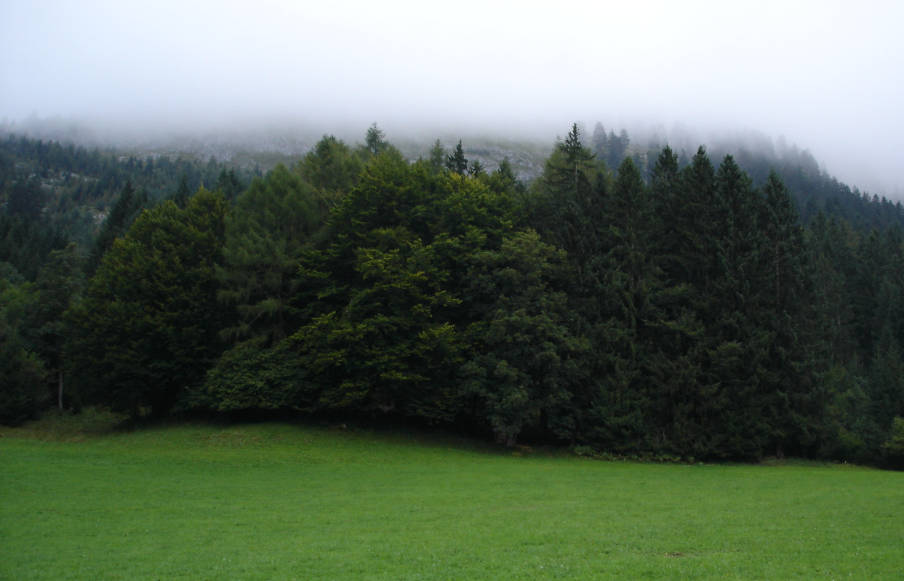



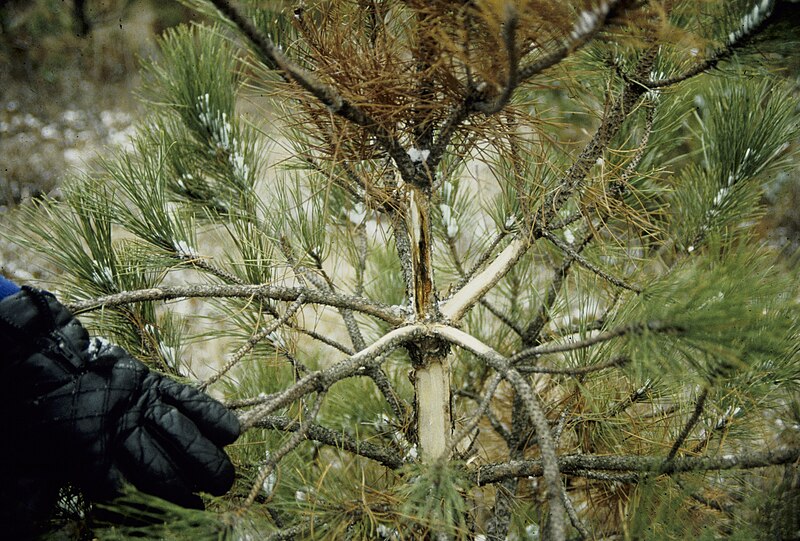


.jpg/400px-Human_Tree_Human_Statue_Bodyart_(9410698339).jpg)
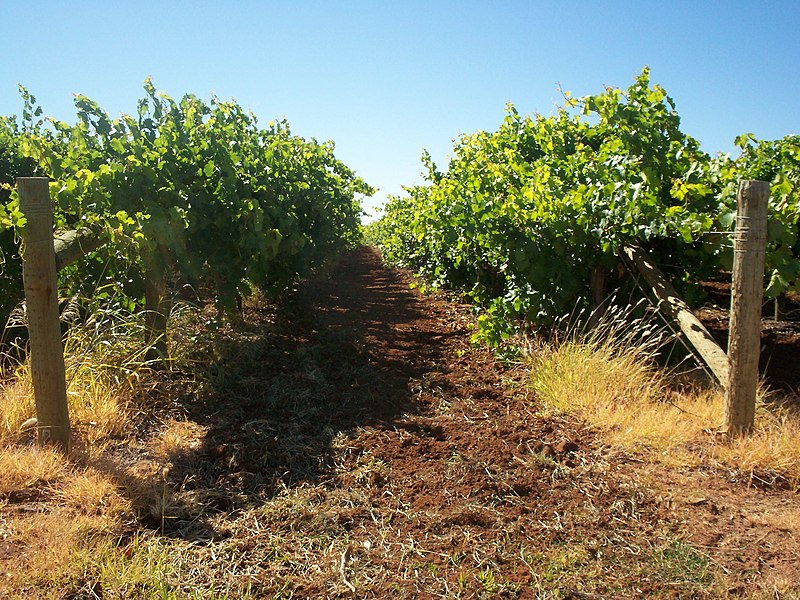
.jpg/800px-Daffodils._(34423824293).jpg)




_--_2012_--_8.jpg/1280px-Joshua_Tree_National_Park_(California%2C_USA)_--_2012_--_8.jpg)
.jpg/800px-Mexican_Creeper_(423998461).jpg)






.jpg/800px-Purple_Fountain_Grass_(8661963655).jpg)

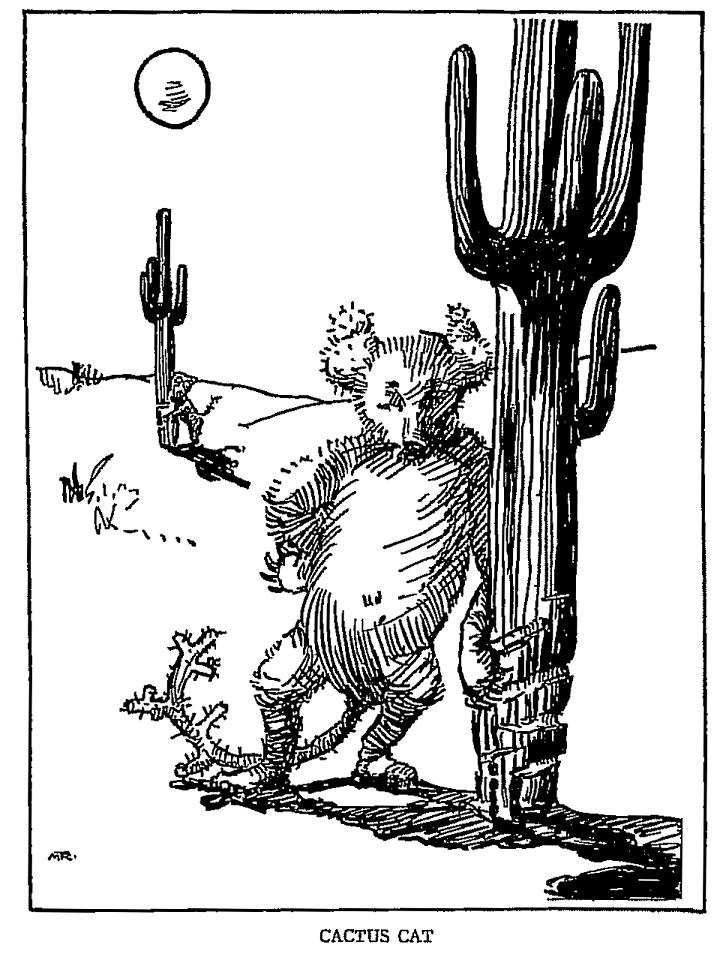

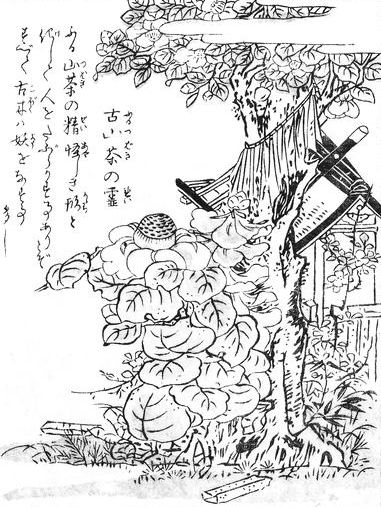
.jpg/800px-Lotus_pedunculatus_-_blossom_(aka).jpg)

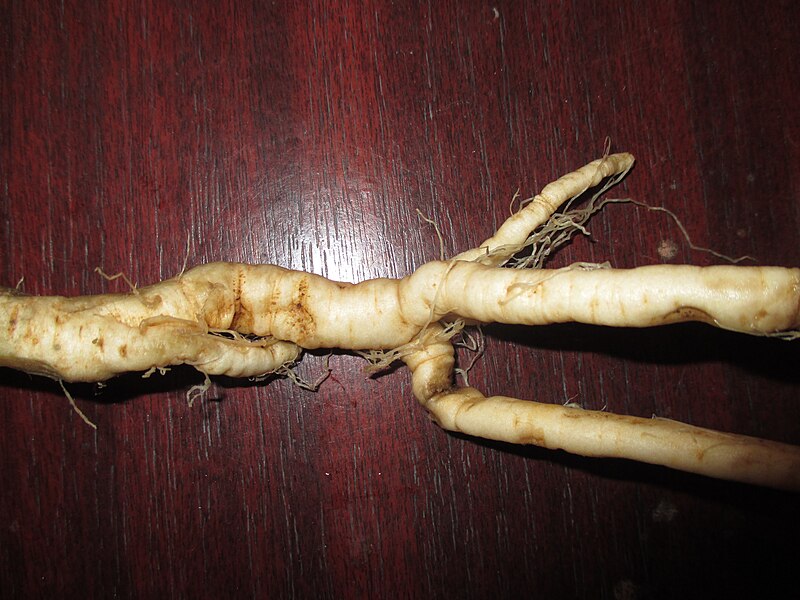
_(14579534309).jpg)


.jpg/800px-Little_Shop_of_Horrors_(16025253336).jpg)


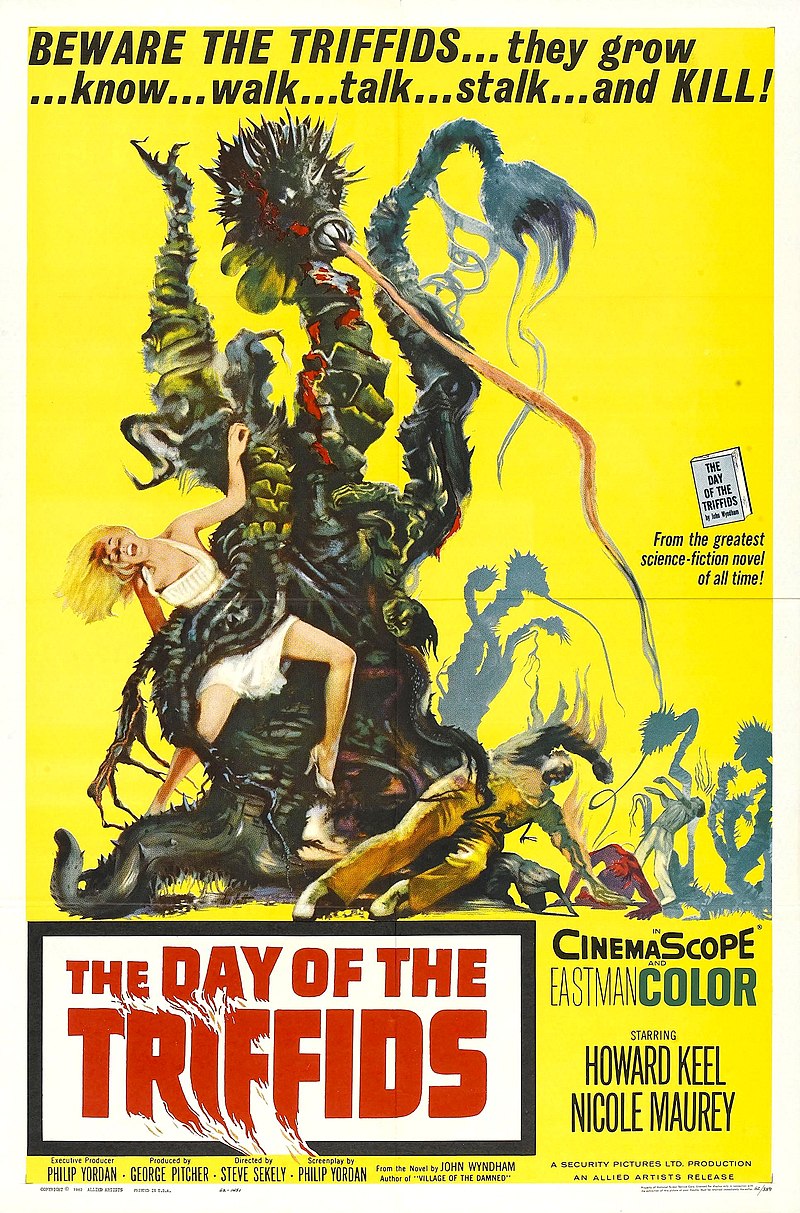
.jpg/800px-Horned_Bladderwort_(4959623968).jpg)
.png/245px-Giant_Cactus_(PSF).png)
